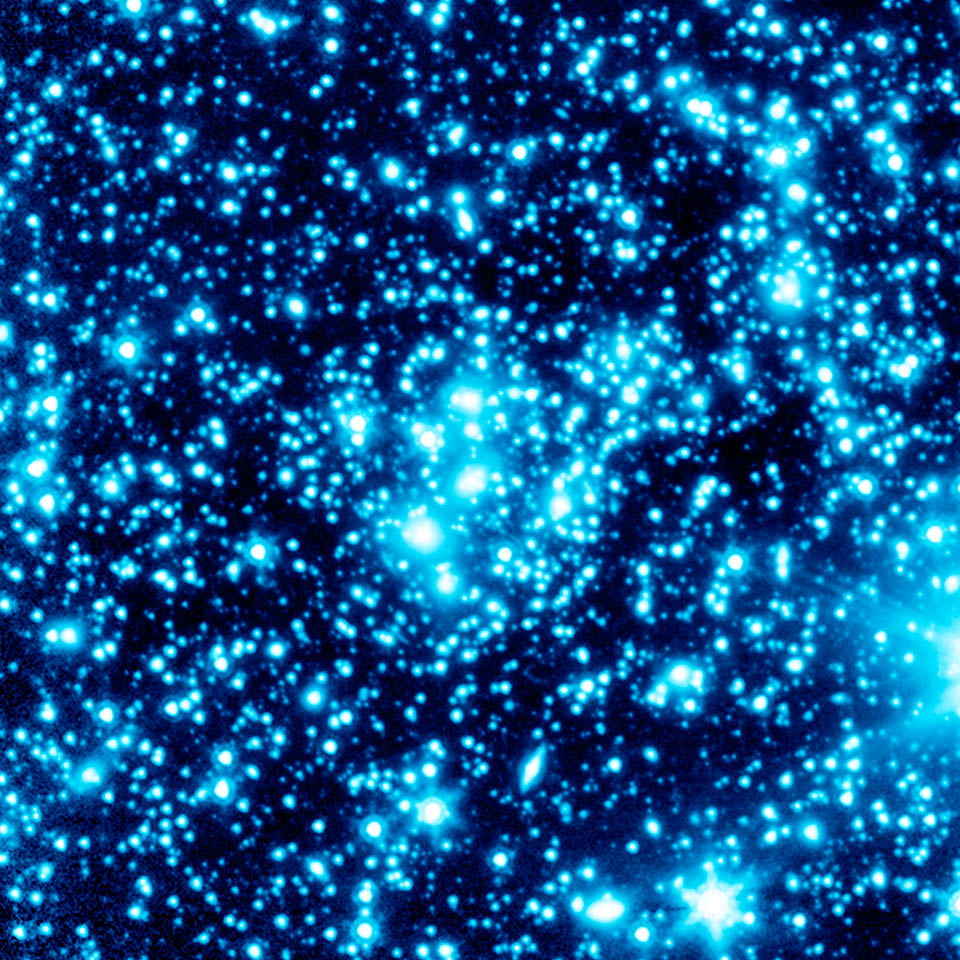Talk about turning back time. Three NASA observatories — the Hubble Space Telescope, the Chandra X-Ray Observatory and the Spitzer Space Telescope — are all working together to look for the universe’s first galaxies. The project is called “Frontier Fields” and aims to examine these galaxies through a technique called gravitational lensing, which allows astronomers to peer at more distant objects when massive objects in front bend their light.
“Our overall science goal with the Frontier Fields is to understand how the first galaxies in the universe assembled,” stated Peter Capak, a research scientist with the NASA/JPL Spitzer Science Center at the California Institute of Technology and the Spitzer lead for the Frontier Fields.
“This pursuit is made possible by how massive galaxy clusters warp space around them, kind of like when you look through the bottom of a wine glass.”
Using the three observatories allows investigators to peer at the galaxies in different light wavelengths (namely, infrared for Spitzer, shorter infrared and optical for Hubble, and X-rays for Chandra). The teams also plan to learn more about how the foreground clusters influence the “warping” of the galaxies behind.
The Hubble and Spitzer telescopes are designed to locate where the galaxies are (and if they are indeed early galaxies) while Chandra can map out the X-ray emissions to better determine the galaxies’ masses. An early example of this project at work was examination of Abell 2744, which yielded a distant find: Abell2744 Y1, one of the earliest known galaxies, which was born about 650 million years after the Big Bang.

